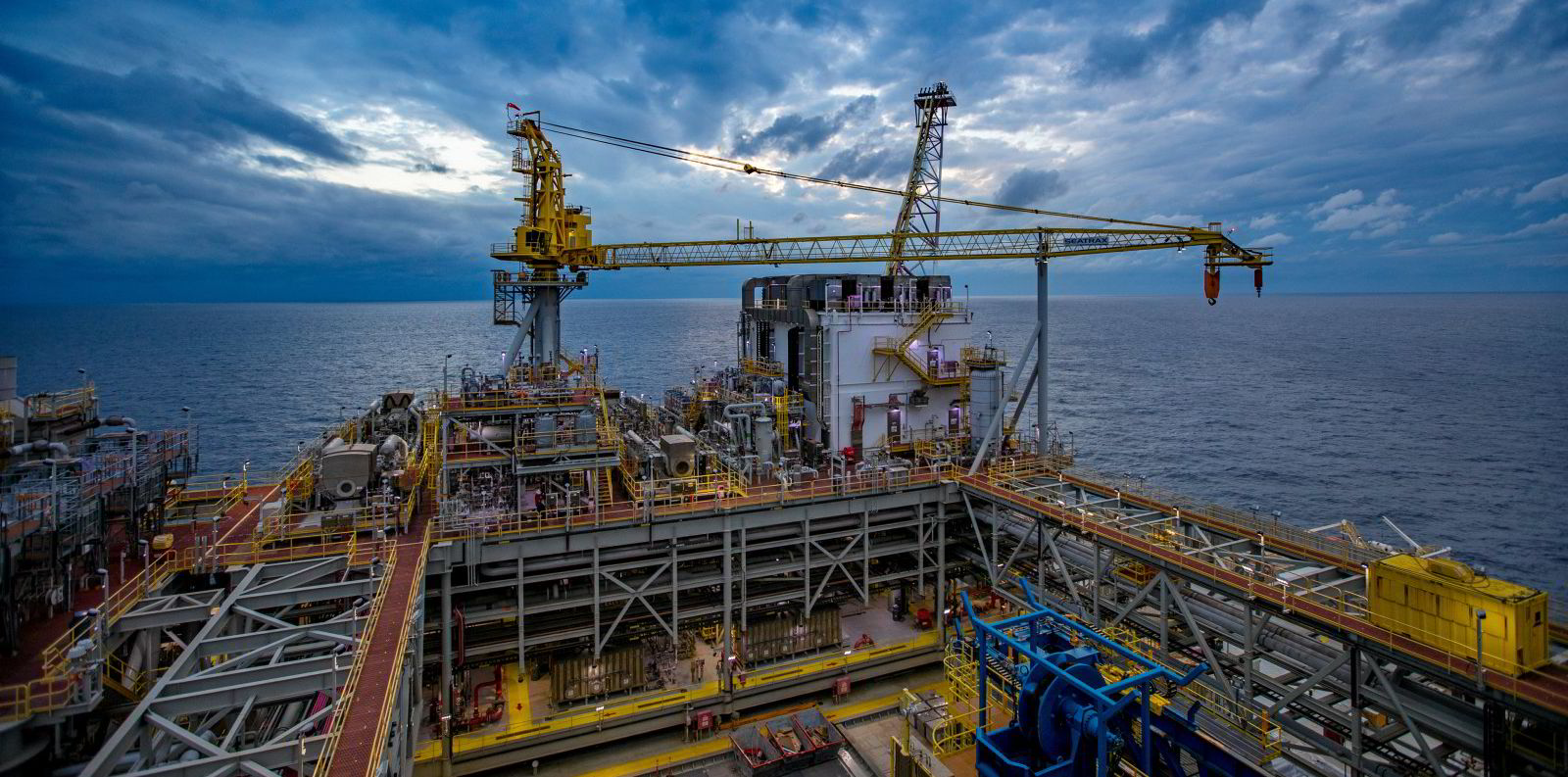Chevron and Hess see key advantages for both deep-water and shale production
Lower-carbon footprints touted as a major selling point for both sources of production

Peaceful coexistence: Chevron and Hess executives see a need for both offshore and unconventional production in the decades to come
Photo: CHEVRON
17 August 2021
By Mark Passwaters
UPSTREAM
in Houston
Deep-water and unconventional oil and gas production have frequently been painted as adversaries, but Hess and Chevron leaders said Monday that their companies will be utilising both in the decades to come.
Shale plays have become appealing to producers with their cheap development costs and rapid production, while deep-water plays are more expensive to start but are more productive over the longer term.
“They seem like a story in contrasts,” said Chris Powers, Chevron's general manager of Strategy and Business Performance.
But the two have a couple of critical elements in common: With reduced break-even costs and both tending to have lower carbon emissions, unconventional and deep-water production could outlast other forms of oil and gas output, the executives said.
“Both deep-water and shale are essential to our future,” said Richard Lynch, senior vice president for Technology and Services at Hess.
Hess has partnered with ExxonMobil on a major oil find off the coast of Guyana, which could help push deep-water oil production higher in the coming years. Lynch said the company estimates global deep-water production could increase by 7 million barrels per day, to 17 million bpd, by 2030 — making up 10% of total global supply.
“Growth in deep-water is very strong (through 2040),” he said. “Deep-water grows much faster than most all others in the upstream.”

Challenge: Petrobras ponders plan for ultra-deepwater gasRead more
While much has been made of low break-even costs for shale plays, Lynch said break-even prices on the Guyana project were equal or lower. He said Phase 1 of the project had a break-even price of $30 per barrel, with Phase 2’s dropping to $25. Phase 3, which is under development, is estimated to have a break-even price of $32.
Chevron is an active player in the Permian basin and the deep-water Gulf of Mexico. Powers said those two plays highlight advantages which shale and deep-water commonly share: They are in regions with stable regulatory regimes, simplifying the exploration and development processes.
As increasing pressure is put on producers to reduce emissions, the lower carbon footprints of deep-water and shale plays only increase their attractiveness, officials from both companies said.
Powers said some technological advances first used in deep-water operations had synergies with onshore programmes and are now used in shale plays as well. A remote monitoring system, pioneered for use in deep-water, is also now used in the Permian.
“Shale and deep-water have proven they can deliver returns and will be key parts of the energy equation for years to come,” Powers said.(Copyright)
By Mark Passwaters
UPSTREAM
in Houston
Deep-water and unconventional oil and gas production have frequently been painted as adversaries, but Hess and Chevron leaders said Monday that their companies will be utilising both in the decades to come.
Shale plays have become appealing to producers with their cheap development costs and rapid production, while deep-water plays are more expensive to start but are more productive over the longer term.
“They seem like a story in contrasts,” said Chris Powers, Chevron's general manager of Strategy and Business Performance.
But the two have a couple of critical elements in common: With reduced break-even costs and both tending to have lower carbon emissions, unconventional and deep-water production could outlast other forms of oil and gas output, the executives said.
“Both deep-water and shale are essential to our future,” said Richard Lynch, senior vice president for Technology and Services at Hess.
Hess has partnered with ExxonMobil on a major oil find off the coast of Guyana, which could help push deep-water oil production higher in the coming years. Lynch said the company estimates global deep-water production could increase by 7 million barrels per day, to 17 million bpd, by 2030 — making up 10% of total global supply.
“Growth in deep-water is very strong (through 2040),” he said. “Deep-water grows much faster than most all others in the upstream.”

Challenge: Petrobras ponders plan for ultra-deepwater gasRead more
While much has been made of low break-even costs for shale plays, Lynch said break-even prices on the Guyana project were equal or lower. He said Phase 1 of the project had a break-even price of $30 per barrel, with Phase 2’s dropping to $25. Phase 3, which is under development, is estimated to have a break-even price of $32.
Chevron is an active player in the Permian basin and the deep-water Gulf of Mexico. Powers said those two plays highlight advantages which shale and deep-water commonly share: They are in regions with stable regulatory regimes, simplifying the exploration and development processes.
As increasing pressure is put on producers to reduce emissions, the lower carbon footprints of deep-water and shale plays only increase their attractiveness, officials from both companies said.
Powers said some technological advances first used in deep-water operations had synergies with onshore programmes and are now used in shale plays as well. A remote monitoring system, pioneered for use in deep-water, is also now used in the Permian.
“Shale and deep-water have proven they can deliver returns and will be key parts of the energy equation for years to come,” Powers said.(Copyright)
No comments:
Post a Comment